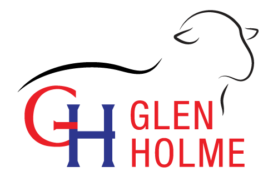New sheep yards have been our focus.
Hot days this month saw a new temperature record at Glen Holme. We reached 47C on 24th January which was the week that we started removing the old yards in readiness to put up our new design.
The old yards had been in place since 1966, the year that our woolshed was built. They were built of white gum which was sawn using a portable timber mill at Kulicup in Western Australia.
Our new yards came from a design we saw at one of the Field days where we display our Dohnes. These were modular, and we had them fully linked to our woolshed and other infrastructure by the end of the month. The project was a full family affair with all our adults and children helping.
We implemented a back-up joining of our ewes with the assistance of a programme to enhance our genetic gain. The June 2019 drop of lambs will be interesting to track, because as a group, we have employed a new tool from our toolbox. The wool quality of our sires is the best we have ever had.
We often talk about genetic gain. Why is this so? All of us in business are subject to increasing costs of production. We need to make constant genetic gains in terms of profitable productivity and feed conversion to even stay ahead. To make continuing profits, genetic gains must exceed increasing costs of production.
The yardstick for measuring gain is based on a balance of income from sales of wool, lambs and surplus sheep. Profit is highly influenced by the number of lambs weaned, and the saleable weight of surplus sheep. Any large increase here makes a huge difference to profitability and sustainability. It also enables optimal flock recovery from low numbers following drought.
Genetic gain of the Glen Holme Dohnes is trackable and is benchmarked against all other Dohnes in Australia. We can show you this if you choose to inquire from us.





















